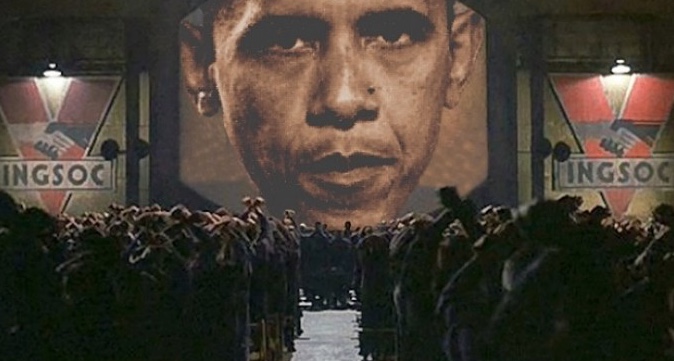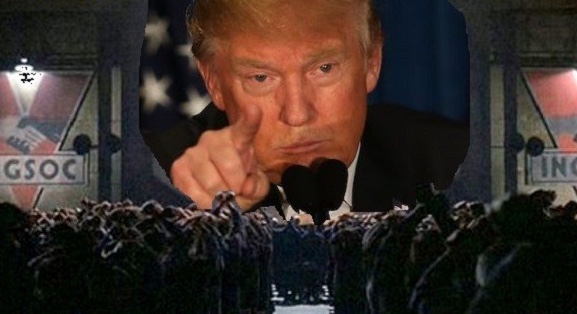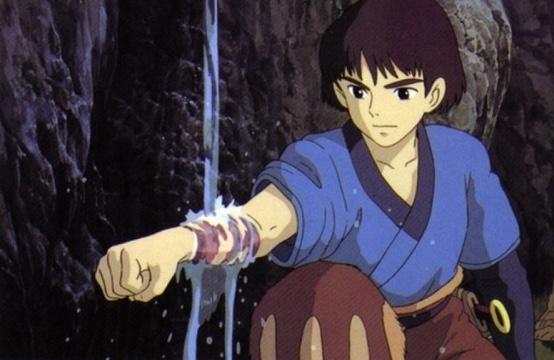29 Jan Don’t Let The Chaos Blind You
George Orwell was working with profound insight when he envisioned the “two minute hate” in his novel “1984”. When we are enraged, our ability to reason goes out the window; rage leads to blindness. It is hypnotizing and intoxicating; enraged people are much more susceptible to the power of suggestion, and more easily controlled. The more that Donald Trump and his allies whip up the rage quotient, the more power they amass. However, the Republicans are not the only ones who try to use rage to muster support – they are just much more direct about it than their Democratic colleagues, and therefore more successful. In the end, though, if most of the population is enraged, there is very little room for rational discussion or thought. Donald Trump knows this better than anyone else – ever – and uses this knowledge with uncanny accuracy.
The master storyteller, Hayao Miyazaki, also recognizes the profound power of rage. In his film Princess Mononoke, several of the main characters become so blinded by rage that they lose all sense of balance and are turned into demons, from the inside out. The boar in the above image, the leader of his clan, becomes so enraged after being shot that he blasts ceaselessly through the countryside until he is finally killed by a young warrior. However, the boar’s rage is so profound that it leaps off of his lifeless body and infects the young man who slayed him, Ashitaka. As the wound begins to spread, threatening to overtake him, he goes on a “hero’s journey” to find peace and relief. The religious scholar Joseph Campbell coined this term, hero’s journey, after recognizing that it is central to almost all culture’s myths. The hero goes on a quest to restore balance to a world in the throes of conflict between good and evil. In most myths, the hero does not and needs not vanquish the darkness completely, but instead brings them back into balance. There can be no good without evil. They are countervailing forces that require each other to exist; Yin and yang.
In Princess Mononoke, the genesis of the rageful boar is a bullet from the gun of a character who is not purely evil. Instead, Lady Eboshi is a firm leader who is good to her people. However, her desire for dominion over the natural world has put the balance between humans and nature out of whack. This desire for power has clouded her ability to see the damage that she is inflicting on the world around her. Thankfully, Ashitaka has such immense inner strength that he is able to resist the rage that fights to overtake him. His clarity of vision allows him to address each of his conflicts with an open heart and a desire for peace. Rather than see Lady Eboshi as a foe to defeat, he challenges her with respect and empathy. Eventually, at the moment of calamity, he helps to restore her vision and together they take steps to shift the world back into balance.
The classic hero’s journey in the West is not usually this complex or nuanced. In Star Wars, or World War II movies, the stories we tell tend to paint the villain as power-mad; purely evil. In these scenarios, the only way to restore balance is to vanquish the villain completely. However, true balance is not restored by annihilating an opposing force. The word balance has many different connotations, and while it can describe the state of being in harmony, some of the definitions point to the ACTIVE nature of the verb. These definitions clarify the idea that maintaining balance requires direct action.
“equipoise between contrasting, opposing, or interacting elements < … the balance we strike between security and freedom. — Earl Warren>
In this understanding, being in balance is far from restful or static, but instead requires constant attention and action, involving a push and pull between opposing forces. Again, that idea of yin and yang. Due to the power of gravitational pull, water constantly seeks a low point. Yet it’s own internal gravitational pull causes it to form into droplets. The conflict between moving towards beading up into droplets, and the pull of the external force of gravity, is far from static. The drop hanging off the grass in the above image is not long for the world. In this case, this conflict between balance and imbalance creates a point of interest.
As the quote from Earl Warren makes clear, balance is not only relevant in regards to physical forces, but to emotional ones as well. Throughout the course of known history the conflict between differing philosophies has resulted in a pattern of change whereby one idea overcomes another opposite idea. It is not simply a case of good battling evil. We can also see the will for power versus the will towards god, or the will of the people versus the will of the individual who wants power. Sometimes these changes are seen in the form of a “revolution”. At other times the change happens in such small increments that we only notice that they have occurred in retrospect.
Now is the time for response rather than reaction. Stay in the moment and don’t let rage or anxiety overtake and blind you. Stand up. Fight back.






No Comments